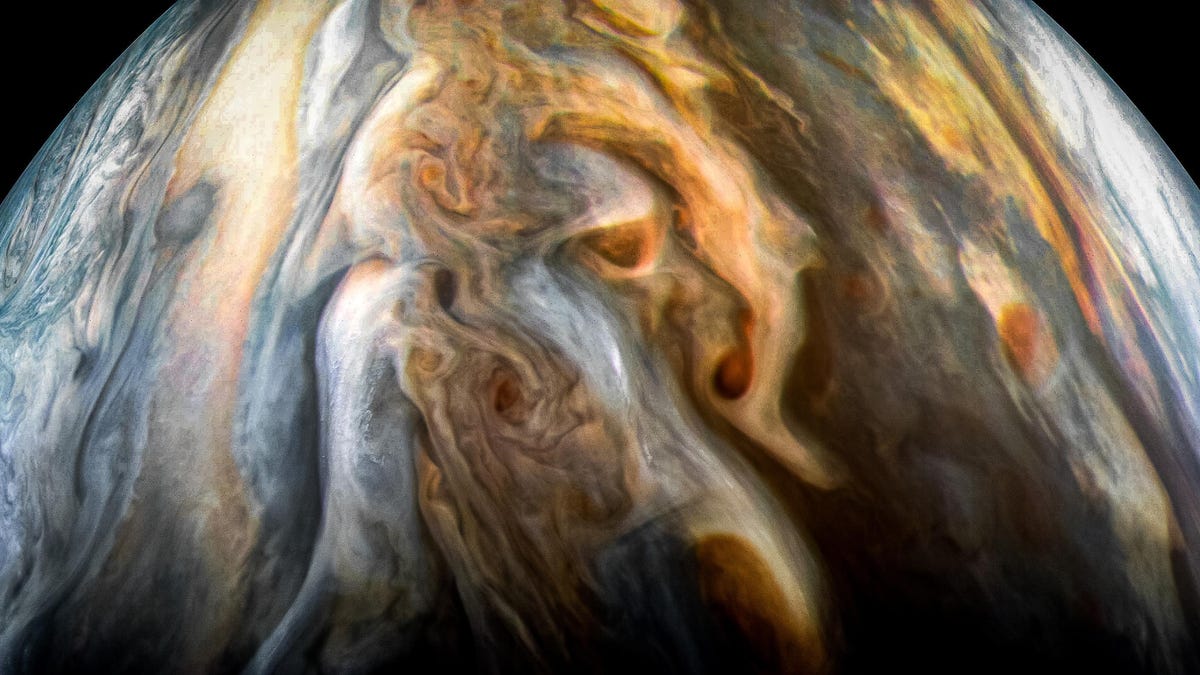NASA extends Mars InSight and Jupiter Juno missions for more years of science
It's good news for anyone who loves Jupiter photos and marsquakes.

NASA's Juno spacecraft snapped this view of Jupiter's southern equatorial region in 2017.
Good news, space fans. We can look forward to many more jaw-dropping views of Jupiter. NASA has officially extended two trailblazing planetary science missions: those involving the Juno spacecraft and the Mars InSight lander.
The extensions came after a review process. "The Senior Review has validated that these two planetary science missions are likely to continue to bring new discoveries, and produce new questions about our solar system," NASA's planetary science division director, Lori Glaze, said in a statement Friday.
Juno, which launched in 2011, was scheduled to end its mission by deorbiting into Jupiter in July 2021. It'll now continue its work studying the gas giant until September 2025 or the end of its life, whichever comes first. The extension also comes with a mission expansion to investigate Jupiter's rings and some of its biggest moons.
We can look forward to not only more views and science from Jupiter itself, but also close flybys of the moons Ganymede, Europa and Io. They're all fascinating, but icy Europa, which may have an ocean under its crust, is of particular interest. NASA is deep into development on its Europa Clipper spacecraft to find out more, but Juno will help tide us over until that mission launches.
InSight's primary mission was set to last for two Earth years, which works out to a little more than one Mars year. It landed in late 2018 and has since delivered data on marsquakes and the inner workings of the red planet. The lander has been trying to burrow a heat probe into the ground but has hit setbacks with that goal.
NASA extended InSight's mission through December 2022. The lander team will focus on gathering seismic and weather data, and may continue to work on the heat probe issue as a lower priority.
Mission extensions are cause for celebration. It means proven hardware will get a chance to continue to contribute to our understanding of the solar system. And the gorgeous Jupiter views to come won't hurt, either.

